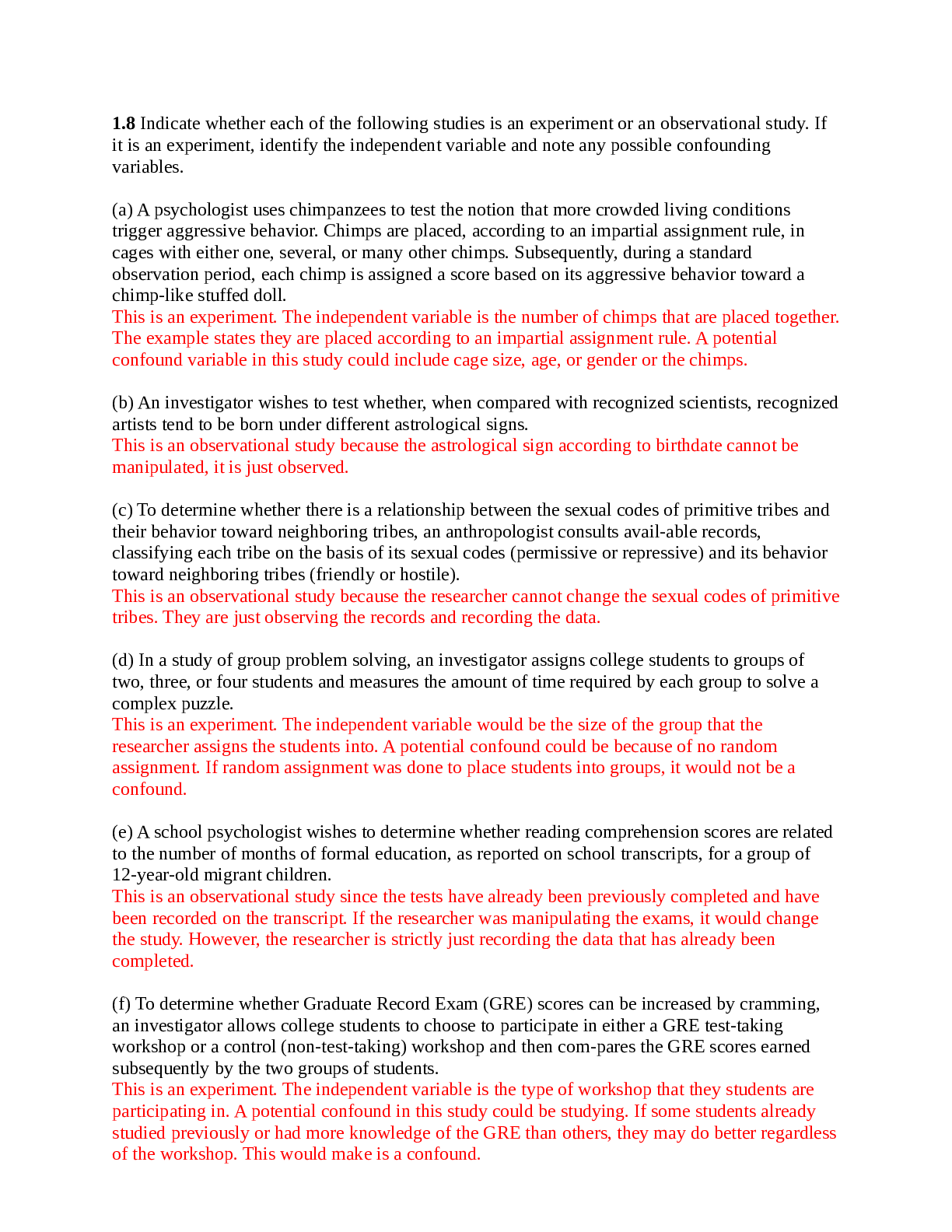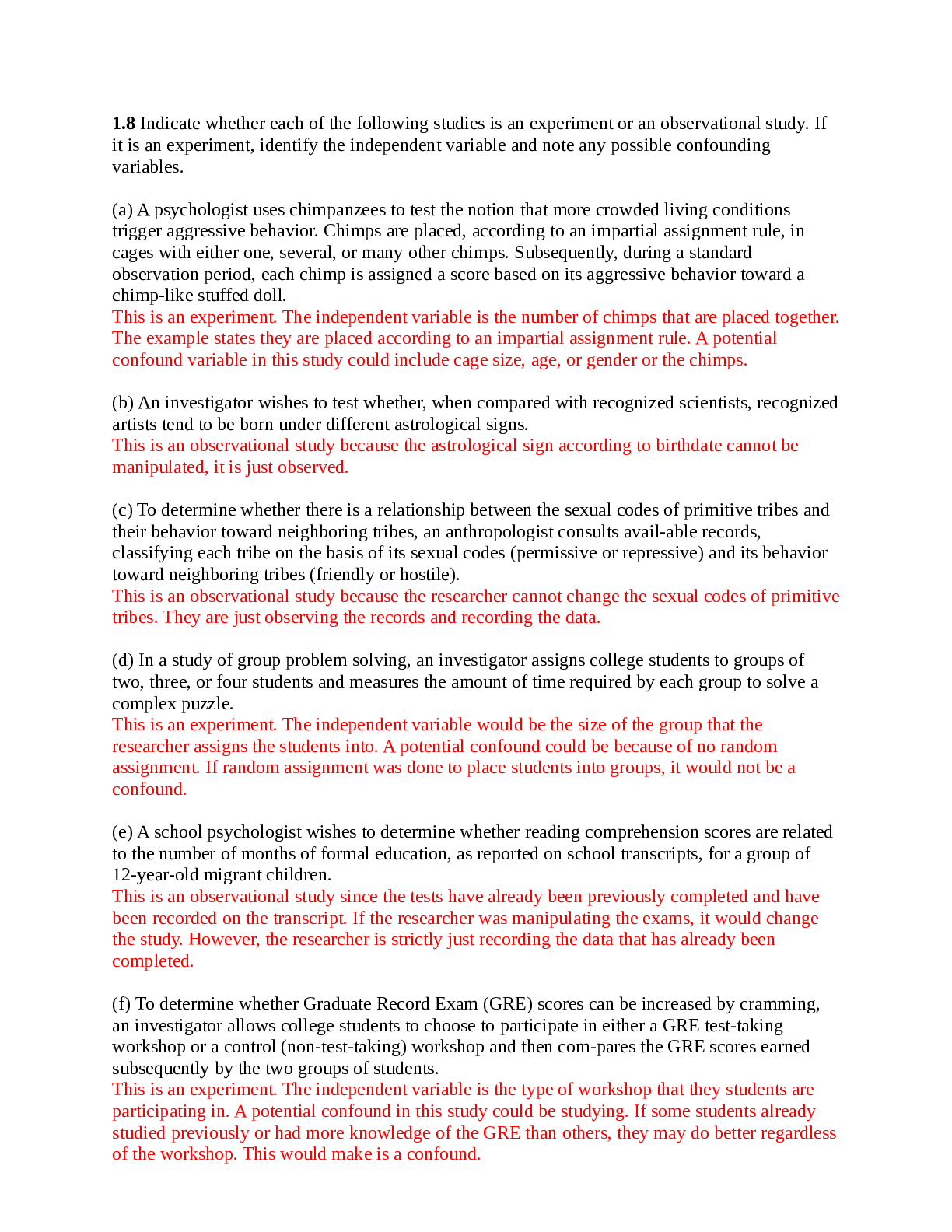1.8 Indicate whether each of the following studies is an experiment or an observational study. If
it is an experiment, identify the independent variable and note any possible confounding
variables.
(a) A psychologist uses chimpanzees to test the notion that more crowded living conditions
trigger aggressive behavior. Chimps are placed, according to an impartial assignment rule, in
cages with either one, several, or many other chimps. Subsequently, during a standard
observation period, each chimp is assigned a score based on its aggressive behavior toward a
chimp-like stuffed doll.
This is an experiment. The independent variable is the number of chimps that are placed together.
The example states they are placed according to an impartial assignment rule. A potential
confound variable in this study could include cage size, age, or gender or the chimps.
(b) An investigator wishes to test whether, when compared with recognized scientists, recognized
artists tend to be born under different astrological signs.
This is an observational study because the astrological sign according to birthdate cannot be
manipulated, it is just observed.
(c) To determine whether there is a relationship between the sexual codes of primitive tribes and
their behavior toward neighboring tribes, an anthropologist consults avail-able records,
classifying each tribe on the basis of its sexual codes (permissive or repressive) and its behavior
toward neighboring tribes (friendly or hostile).
This is an observational study because the researcher cannot change the sexual codes of primitive
tribes. They are just observing the records and recording the data.
(d) In a study of group problem solving, an investigator assigns college students to groups of
two, three, or four students and measures the amount of time required by each group to solve a
complex puzzle.
This is an experiment. The independent variable would be the size of the group that the
researcher assigns the students into. A potential confound could be because of no random
assignment. If random assignment was done to place students into groups, it would not be a
confound.
(e) A school psychologist wishes to determine whether reading comprehension scores are related
to the number of months of formal education, as reported on school transcripts, for a group of
12-year-old migrant children.
This is an observational study since the tests have already been previously completed and have
been recorded on the transcript. If the researcher was manipulating the exams, it would change
the study. However, the researcher is strictly just recording the data that has already been
completed.
(f) To determine whether Graduate Record Exam (GRE) scores can be increased by cramming,
an investigator allows college students to choose to participate in either a GRE test-taking
workshop or a control (non-test-taking) workshop and then com-pares the GRE scores earned
subsequently by the two groups of students.
This is an experiment. The independent variable is the type of workshop that they students are
participating in. A potential confound in this study could be studying. If some students already
studied previously or had more knowledge of the GRE than others, they may do better regardless
of the workshop. This would make is a confound.
Read More


